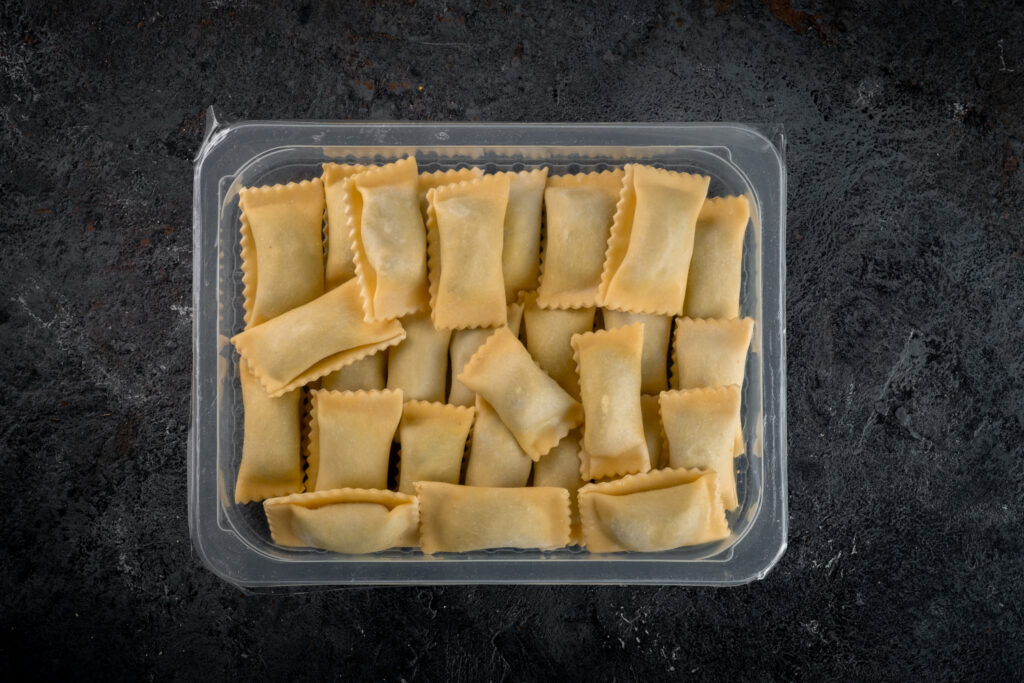
Fresh filled pasta packaging requires careful consideration because it is a delicate and perishable product. In order to guarantee consumers a high-quality product, it’s essential to pay close attention to the packaging as well as the packaging method.
Fresh pasta packaging must preserve the product’s freshness and organoleptic properties, protecting it from contamination and external agents. Let’s see how to package fresh pasta correctly, the best materials for food packaging and the most suitable processes.
Tips about how to store fresh filled pasta
Fresh filled pasta should be stored in the refrigerator in a hermetically sealed container or packaging. Its shelf life is 2 to 3 days, while egg pasta lasts a few days longer, generally up to 3 or 4 days.
Alternatively, filled pasta can be stored in the freezer, which extends its shelf life considerably. Fresh filled pasta can be kept in the freezer for up to 2 to 3 months, depending on the type of filling and the dough used to make the pasta.
Modified atmosphere packaging
An excellent packaging method for fresh filled pasta is the modified atmosphere packaging system. This involves creating a different atmosphere inside the food packaging.
This process preserves fresh filled pasta for longer, maintaining its flavor and appearance. With modified atmosphere packaging, it’s also possible to make packaging more appealing to consumers by customizing it, to promote the product and attract their attention.
With modified atmosphere packaging for fresh filled pasta, the air inside the packaging is replaced with a mixture of gases, which can vary according to the product’s characteristics and the packaging and storage requirements. The gases approved by the European Union are nitrogen, carbon dioxide and some food additives, such as helium, argon and nitrous oxide.
Packaging for fresh filled pasta
There are many packaging solutions for fresh filled pasta. To choose the right one, there are various factors to consider, including the type of product and the fresh pasta packaging machines that will be used (heat-sealing machines for trays, horizontal or vertical flow pack packaging machines or bell packaging machines).
In any case, the packaging must provide an adequate barrier effect, preserving the product’s flavor and aromas and protecting it from water to prevent it from drying out and reducing the weight of the food. The most suitable materials for packaging fresh filled pasta are plastic films, which provide an excellent barrier effect and are easy to customize.
Some of the most popular plastic food packaging types are made with polyethylene (PE) and COEX or laminated polypropylene (PP), such as PP trays sealed with a plastic film. Other effective solutions include laminated paper with mirrored or peelable PET films, depending on the permeability of the gases and the oxygen barrier required to preserve the product perfectly.
Volmar Packaging offers high-quality solutions for pasta packaging, including specific options for fresh filled pasta. We supply products such as rigid films made with thermoformable high-barrier paper, including PP trays with a peelable plastic film closure, which are certified for paper recycling.

